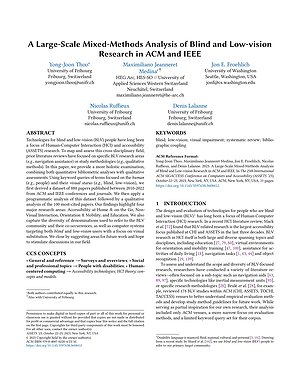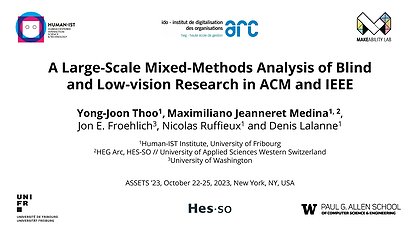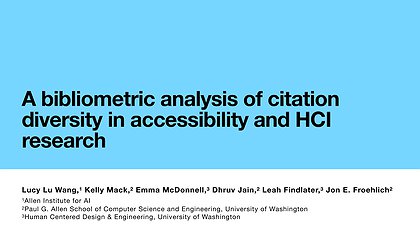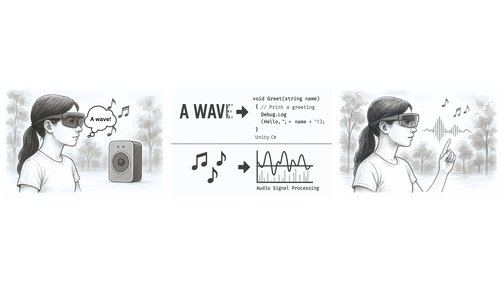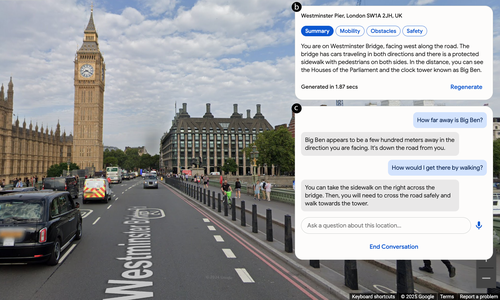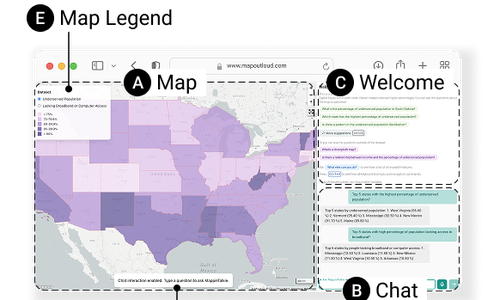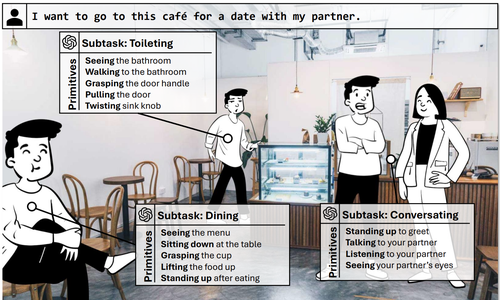Accessibility research has grown substantially in the past few decades, yet there has been no literature review of the field. To understand current and historical trends, we created and analyzed a dataset of accessibility papers appearing at CHI and ASSETS since ASSETS’ founding in 1994. We qualitatively coded areas of focus and methodological decisions for the past 10 years (2010- 2019, N=506 papers), and analyzed paper counts and keywords over the full 26 years (N=836 papers). Our findings highlight areas that have received disproportionate attention and those that are underserved—for example, over 43% of papers in the past 10 years are on accessibility for blind and low vision people. We also capture common study characteristics, such as the roles of disabled and nondisabled participants as well as sample sizes (e.g., a median of 13 for participant groups with disabilities and older adults). We close by critically reflecting on gaps in the literature and offering guidance for future work in the field.
In follow-up research, we specifically examined accessibility/HCI research focused on technologies for blind and low-vision (BLV) people. Using keyword queries of terms focused on visual status (e.g., blind, low-vision), we first derived a dataset of 880 papers published between 2010-2022 from ACM and IEEE conferences and journals. We then apply a programmatic analysis of this dataset followed by a qualitative analysis of the 100 most-cited papers. Our findings highlight four major research areas: Accessibility at Home & on the Go, NonVisual Interaction, Orientation & Mobility, and Education. We also capture the diversity of denominations used to refer to the BLV community and their co-occurrences, as well as computer systems targeting both blind and low-vision users with a focus on visual substitution.

